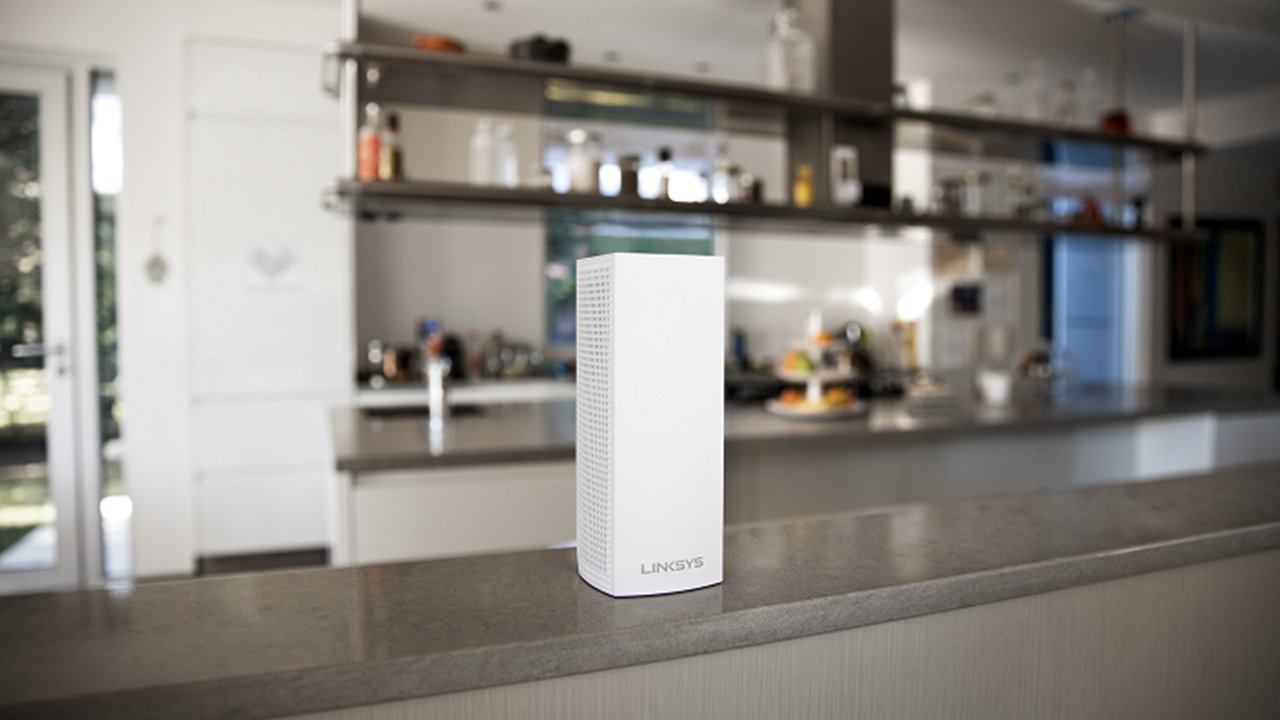2016 was the year the world learned about mesh networks. With companies such as eero and Luma a new way to wire your home up with Wi-Fi was unleashed, and things would never be the same. For anyone uninitiated in the concept of mesh networks, they allow multiple routers to talk to each other, and since they are on the same wireless channel they avoid the bandwidth problem that range extenders suffer from. But with any new sector of a market, it is only a matter of time before the big players jump into the space. With CES 2017 now here, Linksys lifted the curtain on their offering titled Velop.

Much like other mesh network products, it can act like a standard router. A single unit will set you back 249.99 CAD, but depending on the size of your house or work space, you can invest in multipacks ranging from $499.99 for two, and $649.99 CAD for three. The more units you add to your network, the larger the area you can blanket with a Wi-Fi signal. Velop goes for a simple approach, dropping many of the extra bells and whistles for something more streamlined, and despite some minor gripes, it is one of the more promising network products I have tested aimed at a consumer market.
Before I get underway, I must outline that while the Velop is a fantastic product for the console or mobile gamer, if you are a hardcore PC player, this may not be the product for you. It will cover most homes with signal, but if you are serious streamer or online player you will want to consider one of the higher end routers, one with a series of gigabit ports. With the simple design and limited customization, the Velop is targeted at the casual player, and would give a less than ideal setup.
With that out of the way, let’s take a look at the Velop and what makes it so interesting. The Velop units stand tall at 7.2 inches with an all-white tower design. It would sit well next to a Sonos, or Amazon Alexa on an end table or mantel in a living room or study. Unlike other routers covered in lights and outlets, the Velop limits its ports, with each base station having only two Ethernet jacks, one of which is reserved for the router or other device that will supply your internet. In terms of lights, there is a small one on the top of the unit that lets users know the status of the Velop, with little other signs of life.

Where the Velop really shines in its set up. Everything is done in the app. Once you plug the unit in, you start up the app and get things underway. While the app is not as fast as some applications I have used in the past, it got the full process done within 10 minutes. From getting up a network name, assigning a password, and setting up internet. It was all complete and working flawlessly in less time than I normally spend just plugging in a router and finding the URL. Setting up additional base stations was just as easy, and I managed to have my whole house covered in Wi-Fi in about 20 minutes, that includes plugging in and moving power adapters. It was a painless installation.
With this simplification, comes some sacrifices. The Velop does not have the plethora of options people would find on routers of a similar price range. As stated above, there are only two outlets for Ethernet, and Linksys also left out the USB port that many people use for a network drive. There are also issues with advanced setup. Personally, I love diving into how a network works, setting up the bands for each type of signal (2.4 GHz and 5.0 Ghz) but the Velop does not allow this level of advanced setup. It should also be noted if you play with your DNS settings for VPN’s, the Velop does not currently have a way to mess with these settings. It is built for one thing in mind, ease of use. While it executes on this job without question, the limited customization may not be for everyone.

Despite the small customization gripes, when it comes to performance Linksys blows expectations away. Across the house, even in a room with thick concrete walls, the signal was better than expected. Testing on devices such as a PS4 Pro, Surface book, Apple TV, Xbox One, and Roku. No matter where I set them up in the house, the two base stations managed to connect and provide 1080P video with little to no stuttering or buffering. Game downloads from Steam, PSN, and the Xbox Marketplace where fast, and unlike other routers and extender combos I saw no dropped connections or signal issues. For the 1,200 Sqf space, the third router offered only marginal improvement of the already fantastic coverage.
The Velop manages to act on all the promise of a mesh network product, and does so in a very streamlined manner. While it may not be built for the hardcore PC gamer, streamer or tech enthusiast, it is a device that delivers unparalleled performance with minimal effort. If you want a device that will ensure all rooms of your house can watch Netflix or play the latest games on your console, you can’t go wrong with a Velop. It is a device Linksys clearly put effort into building, and I am excited to see how they improve on the product over time. It is a great entry in the devices that offer mesh network solutions, and a fantastic entry in the Linksys product family.






